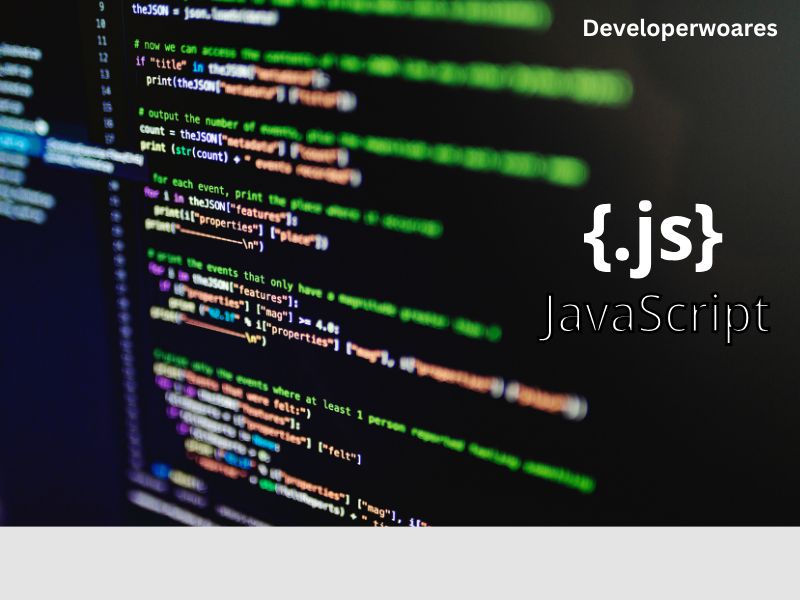You have probably heard about JavaScript if you are currently learning web development (or planning to do so). As a very popular programming language, it started out for web browsers but evolved into much more-so, if you’re considering a career in web development, getting to know it is essential.
The original JavaScript code was developed to work with Netscape Navigator web browsers in the late 1990s. When the Web was first developed, pages were static, offering little user interaction other than hovering over links and loading new pages. JavaScript enabled animation, adaptive content, and form validation on the page for the first time.
You will learn how JavaScript works on the frontend and on the backend in this guide. As well as showing you how this versatile programming language works, I will provide some mini JavaScript tutorials. You should read this article if you want to find out more about JavaScript and what it can do for you.
JavaScript: what is it?
JavaScript (js) is an object-oriented programming language that is used by many websites to script their pages. Using it on an HTML document will enable dynamic interactivity on websites. It is an interpreted, full-featured programming language. It was introduced in 1995 for adding programs to websites in the Netscape Navigator browser. All other graphical web browsers have adopted it since then. Users can build interactive web applications with JavaScript that don’t require reloading the page every time they interact. As a traditional website uses js to provide multiple forms of interactivity, it also provides a simple interface.
HTML and CSS provide structure and style to web pages, but JavaScript adds interactive elements that engage users. It is estimated that 90% of Internet webpages would be static without JavaScript.
How is JavaScript used?
JavaScript improves the navigation on a website and makes the web pages more interactive. It’s used by tech giants like Google, Facebook, Amazon, YouTube, and Twitter to enhance static information with 2D/3D graphics, animated images, interactive pop-up videos, interactive maps, and real-time content updates.
The building blocks of front-end web development are JavaScript, HTML, and CSS. When you view a webpage in your browser, you are running code like JavaScript, CSS, and HTML to create the interface you see. A programmer can then manipulate HTML and CSS with JavaScript via the Document Object Model API, enabling them to display interactive content, such as pop-ups, drop-down menus, countdowns, animations, scrolling videos, and more, by manipulating HTML and CSS.
With JavaScript, developers can not only create web applications, but also browser games, web servers, front-end coding using Angular, and back-end infrastructure using Node.js. Most commonly, JavaScript runs code in response to website or application events, operates on text pieces referred to as strings, and stores useful values inside variables. The JavaScript programming language is used in unexpected places outside of the internet, including iOS and Android apps, cross-platform desktop apps, smart TVs, and even works with the Internet of Things (IoT).
Do you know how JavaScript works?
JavaScript is a client-side scripting language, which means that it operates on the user’s browser and not on an external device. It is a server-side language such as MySQL that handles any database requests, but not client-side.
Moreover, JavaScript does not require anything to be downloaded to a user’s device, as modern browsers already include the necessary software. JavaScript is therefore much more user-friendly than some other languages. Now that you know how JavaScript works, let’s discuss how to use it in websites.
A Guide to Becoming a JavaScript Developer
A JavaScript skill is a “must” for web developers. JavaScript proficiency appears in nearly one-third of all programming-related job listings on sites like Indeed. Around 13.8 million JavaScript Developers are employed worldwide. Developers need to know how to design, test, and implement JavaScript software. Here are a few ideas to get you started with JavaScript or how to become a JavaScript developer.
Where can I learn JavaScript?
With the many resources available online, you can start learning JavaScript. JavaScript Basics and HTML, CSS, and JavaScript for Web Developers are two popular online courses on Coursera for learning JavaScript. You can learn JavaScript independently through interactive tutorials, projects, and quizzes.
There are also many books and online resources available for learning JavaScript. It is one of the most popular JavaScript books, JavaScript: The Definitive Guide, by David Flanagan. There are several books available on JavaScript, including Eloquent JavaScript by Marijn Haverbeke.
You can also learn JavaScript by writing code. Build small projects, such as interactive web pages or simple games, by setting up a development environment. Find out what works best for your projects by experimenting with different frameworks and libraries.
Brief summary
JavaScript is a programming language used to create interactive web pages. It runs mostly on users’ computers, making it a client-side language rather than a server-side language. JavaScript is available in many different libraries and frameworks, each with its own advantages and disadvantages. It’s a lightweight, easy-to-learn version of JavaScript.
It is a versatile language that can be used to create a wide variety of applications. A tool can be used for a variety of tasks, so selecting the right one for the job is essential. You can create anything from a simple web page to an intricate web application with the right tool.
If you want to get into web development, you should learn JavaScript. It is easy to learn, and there are a lot of resources available. As soon as you have mastered the basics, you can start exploring our available libraries and frameworks.

